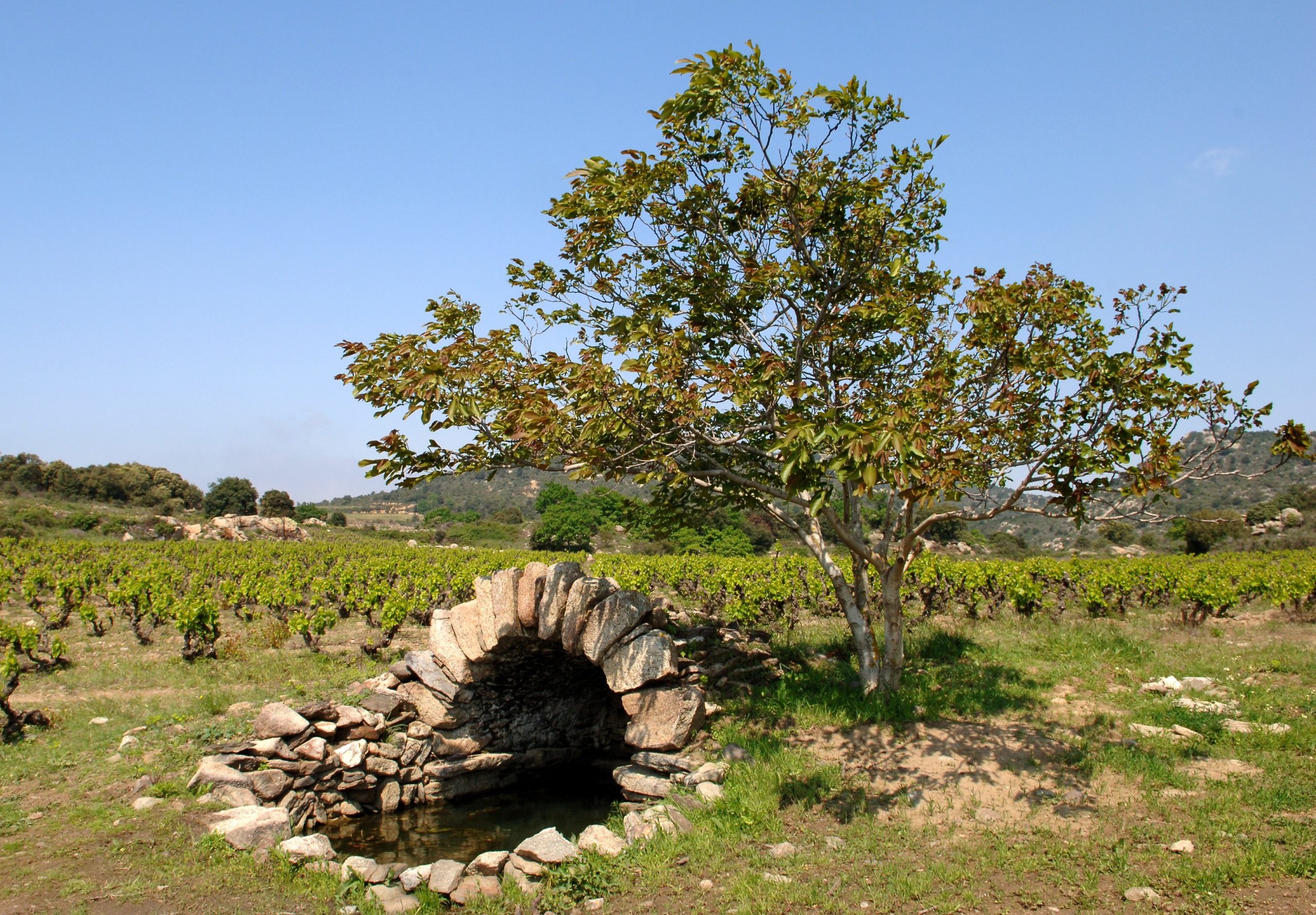TACKLING WATER SCARCITY IN ROUSSILLON
Roussillon’s Mediterranean climate and privileged geographical location bring real advantages to vine production. Although better placed than most to withstand extreme weather events Roussillon is still facing multiple challenges in increasingly unpredictable climatic conditions. The biggest one is water scarcity
Roussillon is heading towards a very dry summer. France has experienced its worst winter drought since 1959, with 32 days without rain, and the region’s ground water levels are already at a record low.
Managing vineyard irrigation and preventing vine stress in hot summers is increasingly a challenge for winemakers, especially in mountain areas where access to river and water ways is impossible. And where it is, transporting or pumping water is costly – and regulated, by necessity, by local and communal authorities.
Given the increasing water scarcity, winemakers in Roussillon are implementing advanced water management techniques. This includes the use of soil moisture sensors, weather data analysis, and precision irrigation systems where it is possible to optimize water usage and reduce wastage.
Some wineries are also exploring alternative water sources and implementing water recycling and conservation measures to ensure sustainable vineyard irrigation especially for the young vines.
Old vines in Roussillon normally have deeper roots that allow them to limit their suffering in terms of their water supply.
Vineyard managers in the region have been actively experimenting with various techniques and strategies to try to tackle drought and ensure the sustainability of their vineyards. Here are some of the approaches they have been exploring:
- Dry Farming: to encourage deeper root growth as the vines search for water, making them more resilient to drought conditions. But this requires ploughing and it is essential to manage them carefully otherwise we will get a greater evaporation of the soil and a reverse effect. By practicing dry farming, winemakers aim to reduce water consumption and create more sustainable vineyard ecosystems.
- Cover Crops and Mulching: Planting cover crops, such as grasses and legumes, between vineyard rows can help mitigate drought effects. These cover crops improve soil structure, increase water infiltration, and reduce evaporation by providing shade and reducing soil temperature. But we must always be ready to eliminate it in case of too much competition of water consumption between this cover and the vine plants. Additionally, using mulch, such as organic materials or gravel, around the base of the vines helps retain soil moisture and suppress weed growth.
- Soil Management and Conservation: Improving soil health and structure is crucial for enhancing water retention and availability for the vines. Techniques like soil tilling, compost application, and the use of organic matter can improve water-holding capacity and promote deeper root development. Additionally, soil conservation measures such as contour plowing and terracing help prevent erosion and promote water infiltration.
- Irrigation Techniques: When irrigation is necessary and allowed (because it is not everywhere in Roussillon), winemakers are exploring more efficient irrigation techniques to optimize water usage and avoid the hydric stress for the plant. Drip irrigation, just during the key moments of the vegetative cycle, delivers water directly to the root zone, minimizing evaporation and reducing water wastage. Precision irrigation technologies, including soil moisture sensors and weather-based irrigation scheduling, help ensure that vines receive the appropriate amount of water at the right time, avoiding over-irrigation.
- Vineyard Microclimate Management: Managing the microclimate within the vineyard, through the creation of surrounding hedges, or planting trees on the plot in the middle of the vineyard, can help mitigate the impact of drought. Techniques such as canopy management, including leaf thinning and shoot positioning, help regulate sunlight exposure and airflow, reducing water stress on the vines. This allows for better ripening and water-use efficiency.
- Grape Variety Selection: Winemakers are also experimenting with grape varieties that are more adapted to drier and warmer conditions. By selecting grape varieties with higher drought tolerance and lower water requirements, winemakers aim to minimize the impact of drought on vine health and grape quality. This might involve planting Mediterranean or alien drought-resistant varieties that are well-suited to the region’s climate.
Collaboration between winemakers, research institutions, and viticultural experts is vital in tackling climate change’s impact. Vinopôle Roussillon is a leading light in terms of research & development in the region and its latest research focuses heavily on studying drought-resistant varietals. It has introduced 18 new grapes to its experimental vineyard to study their drought-resistance abilities. It is also trialling different rootstocks for the production of Syrah. The first results are expected for the 2024 harvest.
For more information on Vinipôle’s varietals trials, click here.
Tamlyn Currin’s latest article, Roussillon resilience in the face of climate crisis, relates the conversations she had recently with local winemakers and their approach to the urgent challenges they are facing.





